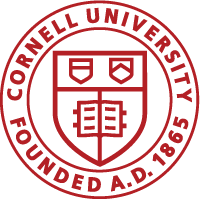Novel Therapeutics to Treat TB by Stimulating Bacterial cAMP Production
Principal Investigator: Brian VanderVen
DESCRIPTION (provided by applicant):
In this project we are focused on chemically perturbing Mtb persistence mechanisms as a way to augment or shorten TB treatment. It is understood that Mtb metabolizes host lipids to persist and recent work has discovered that chemically stimulating cAMP production in Mtb blocks the bacterium’s ability to metabolize host lipids. Importantly, two clinical candidates with this mechanism of action (Rv1625/cya agonists) improve the bactericidal and sterilizing activity of BPaL and shorten treatment in mice. The overall objective of this project is to examine how cAMP stimulating compounds exert their inhibitory properties on Mtb and explore how these compounds could be leveraged to mitigate resistance while synergizing with other TB drugs. The central hypothesis of this work is that cAMP stimulators inhibit Mtb growth by perturbing bacterial lipid metabolism and combining multiple cAMP stimulators with unique targets will amplify this inhibitory process and reduce the frequency of resistance to this class of compounds.
Activating cAMP synthesis in Mtb blocks lipid metabolism but a mechanistic understanding of this process is lacking. Thus, we will focus on characterizing a novel cAMP stimulator (CU35), determine how cAMP blocks lipid metabolism in Mtb, and we will combine multiple chemical and genetic approaches to amplify cAMP production in Mtb to determine how this impacts Mtb physiology (Aim 1). We have found that CU35 stimulates cAMP production independent of Rv1625/cya suggesting that other compounds that stimulate cAMP synthesis in Mtb may exist. To discover additional cAMP stimulators, we will conduct a novel high-throughput chemical screen to identify compounds that stimulate cAMP in a Rv1625/cya-independent manner. Compounds emerging from our screen will be prioritized based on structure novelty, safety, potency, PK properties, and synergy with known cAMP stimulators (Aim 2). The most important therapeutic property of cAMP stimulators is their ability to improve the bactericidal and sterilizing activity of BPaL in mice. Thus, we will evaluate our innovative idea that stimulating cAMP through multiple independent routes could amplify synergy with BPaL in mice. We will also evaluate lead compounds from our chemical screen for BPaL potentiating activity in mice (Aim 3). Overall, these studies are highly significant because they will provide information and new lead compounds to ultimately allow us to combine multiple cAMP stimulators with BPaL and achieve an innovative short acting TB drug regimen. The studies will provide a basic biological understanding cAMP signaling in Mtb, define the novel mechanism of action involving cAMP-dependent control of lipid metabolism in Mtb, and will address practical drug development questions around synergy with cAMP stimulators.


